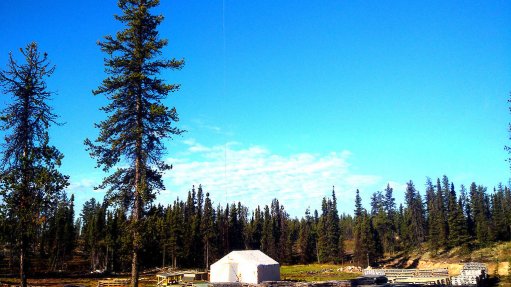
The selection of the in-situ recovery (ISR) mining method at the Tthe Heldeth Túé (THT) deposit, formerly named J Zone, at the Waterbury Lake property has transformed expectations for the project, generating robust preliminary financial results with comparatively modest upfront capital.
TSX- and NYSE American-listed Denison Mines on Tuesday announced the preliminary economic assessment (PEA) results for the Waterbury project, which evaluated the potential use of ISR mining at THT with associated processing at the company’s 22.5%-owned McClean Lake mill.
This is the second Denison project amenable to ISR mining, the first being the Phoenix deposit at Wheeler River.
In an ISR mining operation, a mining solution is injected into the ore zone through a series of injection wells, and then dissolves the uranium as it travels through the ore zone, before the uranium bearing solution is then pumped back to surface through a series of recovery wells.
VP operations David Bronkhorst said that Denison's plan for the project included a 'freeze wall' design adapted from the 'freeze dome' outlined for the Phoenix deposit in the Wheeler River prefeasibility study, which reduced capital costs.
“The freeze wall design allows for the containment of a smaller area and a significant reduction in up-front capital costs, as compared to the 'freeze dome'. Additionally, the freeze wall is expected to offer environmental advantages by providing containment of the ISR mining operation from the depth of the uranium deposit all the way to surface. With the positive results of the freeze wall design demonstrated in the Waterbury PEA, Denison is also evaluating the potential benefits of a freeze wall (rather than freeze dome) for use at Wheeler River's Phoenix deposit."
The THT ISR operation is estimated to produce total mine production of 9.7-million pounds U3O8 over an approximate six-year mine-life with final processing occurring at the McClean Lake mill. The project has an average cash operating cost of $12.23/lb and an all-in cost of $24.93/lb.
Initial capital costs are estimated to be $112-million. The project has a base case pretax net present value of $177-million and an internal rate of return of 39.1%.
The base case spot price assumption for the PEA is $53.59/lb.
The PEA includes an indicative timeline with pre-production activities beginning in 2025, and with first production estimated in 2028.
Waterbury is owned by the Waterbury Lake Uranium Limited Partnership (WLUL), of which Denison owns 66.90% and a consortium of Korean investors owns the balance.
Denison believes that the combination of the ISR mining method with a high-grade uranium deposit in the Athabasca basin region has the potential to result in “one of the most environmentally protective mining operations in the world”, stating that it will have a small footprint with minimal surface disturbances. There are no tailings expected to be generated and no site water discharge planned.